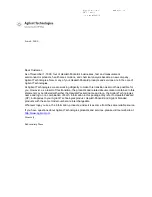
6.15 TESTINg MOduLE STRINgS FOR CORRECT vOLTAgE
Note: The examples in this section show values for ND
modules. The voltage will differ for other modules.
For an array of 11 modules, directly connect the first 10
solar modules and measure in the following order.
1. Measure the voltage of the 11
th
solar module.
Black array output cable
Solar modules 1 to 10
Solar module 11
Digital
tester
1
2
3
4
5
6
7
8
9 10
11
+
-
Switch the tester to DC (50 V
DC
range) and measure.
The voltage will vary depending on the amount of
sunlight, but the value should be from 30 to 35 V
DC
.
2. Next, connect the 11
th
solar module to the 10
th
solar
module. Switch the tester to DC 600 V
DC
range and
measure. Measure the voltage at the ends of the
- (negative) array output cable connected to the
11
th
module, and the + (positive) array output cable
connected to the 1
st
solar module.
Solar modules 1 to 11
Digital
tester
Black array output cable
1
2
3
4
5
6
7
8
- negative
+ positive
White array output cable
9
10
11
The voltage will vary depending on the amount of
sunlight, but it should measure, about 360 V
DC
. Be
careful of shock.
3. Check the measurements
•
Multiply the value measured for a single solar
module in step (1) by the number of solar modules.
Example: 32.5 V
DC
x 11 modules = 357.5 V
DC
•
Compare this value to the measured value (e.g.
360 V
DC
) for the whole array. The string wiring is
correct if the difference is 9 V or less.
Difference between (voltage of 1 solar module x
N) and (voltage of whole array) less than 9 V.
N: number of solar modules in 1 string.
•
If the difference is greater than 9 V, repeat the
measurement. If you obtain the same result, check
for incorrect wiring.
6
INSTALLATION WORk
9
9
Содержание SRS Mounting System
Страница 41: ...NOTES ...




































